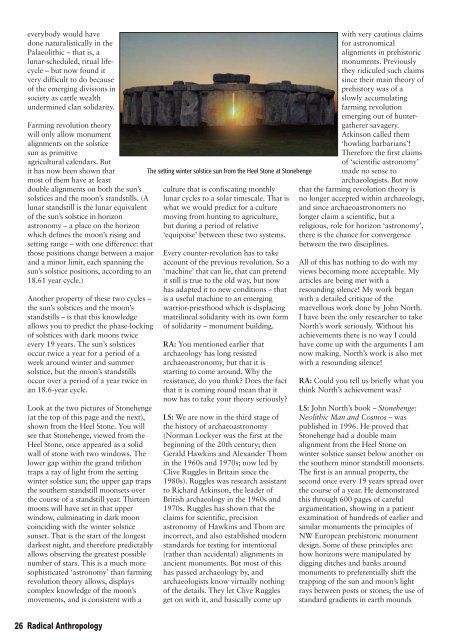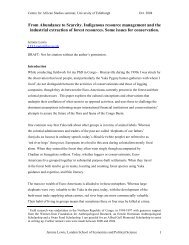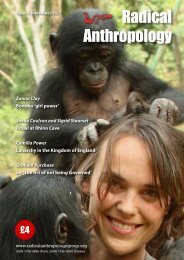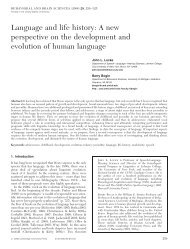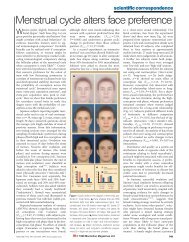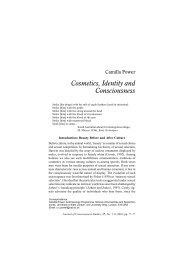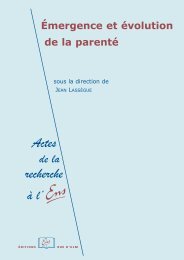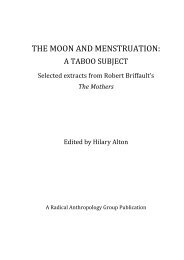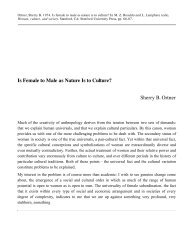The scarcity myth The scarcity myth - Radical Anthropology Group
The scarcity myth The scarcity myth - Radical Anthropology Group
The scarcity myth The scarcity myth - Radical Anthropology Group
Create successful ePaper yourself
Turn your PDF publications into a flip-book with our unique Google optimized e-Paper software.
everybody would have<br />
done naturalistically in the<br />
Palaeolithic – that is, a<br />
lunar-scheduled, ritual lifecycle<br />
– but now found it<br />
very difficult to do because<br />
of the emerging divisions in<br />
society as cattle wealth<br />
undermined clan solidarity.<br />
Farming revolution theory<br />
will only allow monument<br />
alignments on the solstice<br />
sun as primitive<br />
agricultural calendars. But<br />
it has now been shown that<br />
most of them have at least<br />
double alignments on both the sun’s<br />
solstices and the moon’s standstills. (A<br />
lunar standstill is the lunar equivalent<br />
of the sun’s solstice in horizon<br />
astronomy – a place on the horizon<br />
which defines the moon’s rising and<br />
setting range – with one difference: that<br />
those positions change between a major<br />
and a minor limit, each spanning the<br />
sun’s solstice positions, according to an<br />
18.61 year cycle.)<br />
Another property of these two cycles –<br />
the sun’s solstices and the moon’s<br />
standstills – is that this knowledge<br />
allows you to predict the phase-locking<br />
of solstices with dark moons twice<br />
every 19 years. <strong>The</strong> sun’s solstices<br />
occur twice a year for a period of a<br />
week around winter and summer<br />
solstice, but the moon’s standstills<br />
occur over a period of a year twice in<br />
an 18.6-year cycle.<br />
Look at the two pictures of Stonehenge<br />
(at the top of this page and the next),<br />
shown from the Heel Stone. You will<br />
see that Stonehenge, viewed from the<br />
Heel Stone, once appeared as a solid<br />
wall of stone with two windows. <strong>The</strong><br />
lower gap within the grand trilithon<br />
traps a ray of light from the setting<br />
winter solstice sun; the upper gap traps<br />
the southern standstill moonsets over<br />
the course of a standstill year. Thirteen<br />
moons will have set in that upper<br />
window, culminating in dark moon<br />
coinciding with the winter solstice<br />
sunset. That is the start of the longest<br />
darkest night, and therefore predictably<br />
allows observing the greatest possible<br />
number of stars. This is a much more<br />
sophisticated ‘astronomy’ than farming<br />
revolution theory allows, displays<br />
complex knowledge of the moon’s<br />
movements, and is consistent with a<br />
<strong>The</strong> setting winter solstice sun from the Heel Stone at Stonehenge<br />
culture that is confiscating monthly<br />
lunar cycles to a solar timescale. That is<br />
what we would predict for a culture<br />
moving from hunting to agriculture,<br />
but during a period of relative<br />
‘equipoise’ between these two systems.<br />
Every counter-revolution has to take<br />
account of the previous revolution. So a<br />
‘machine’ that can lie, that can pretend<br />
it still is true to the old way, but now<br />
has adapted it to new conditions – that<br />
is a useful machine to an emerging<br />
warrior-priesthood which is displacing<br />
matrilineal solidarity with its own form<br />
of solidarity – monument building.<br />
RA: You mentioned earlier that<br />
archaeology has long resisted<br />
archaeoastronomy, but that it is<br />
starting to come around. Why the<br />
resistance, do you think Does the fact<br />
that it is coming round mean that it<br />
now has to take your theory seriously<br />
LS: We are now in the third stage of<br />
the history of archaeoastronomy<br />
(Norman Lockyer was the first at the<br />
beginning of the 20th century; then<br />
Gerald Hawkins and Alexander Thom<br />
in the 1960s and 1970s; now led by<br />
Clive Ruggles in Britain since the<br />
1980s). Ruggles was research assistant<br />
to Richard Atkinson, the leader of<br />
British archaeology in the 1960s and<br />
1970s. Ruggles has shown that the<br />
claims for scientific, precision<br />
astronomy of Hawkins and Thom are<br />
incorrect, and also established modern<br />
standards for testing for intentional<br />
(rather than accidental) alignments in<br />
ancient monuments. But most of this<br />
has passed archaeology by, and<br />
archaeologists know virtually nothing<br />
of the details. <strong>The</strong>y let Clive Ruggles<br />
get on with it, and basically come up<br />
with very cautious claims<br />
for astronomical<br />
alignments in prehistoric<br />
monuments. Previously<br />
they ridiculed such claims<br />
since their main theory of<br />
prehistory was of a<br />
slowly accumulating<br />
farming revolution<br />
emerging out of huntergatherer<br />
savagery.<br />
Atkinson called them<br />
‘howling barbarians’!<br />
<strong>The</strong>refore the first claims<br />
of ‘scientific astronomy’<br />
made no sense to<br />
archaeologists. But now<br />
that the farming revolution theory is<br />
no longer accepted within archaeology,<br />
and since archaeoastronomers no<br />
longer claim a scientific, but a<br />
religious, role for horizon ‘astronomy’,<br />
there is the chance for convergence<br />
between the two disciplines.<br />
All of this has nothing to do with my<br />
views becoming more acceptable. My<br />
articles are being met with a<br />
resounding silence! My work began<br />
with a detailed critique of the<br />
marvellous work done by John North.<br />
I have been the only researcher to take<br />
North’s work seriously. Without his<br />
achievements there is no way I could<br />
have come up with the arguments I am<br />
now making. North’s work is also met<br />
with a resounding silence!<br />
RA: Could you tell us briefly what you<br />
think North’s achievement was<br />
LS: John North’s book – Stonehenge:<br />
Neolithic Man and Cosmos – was<br />
published in 1996. He proved that<br />
Stonehenge had a double main<br />
alignment from the Heel Stone on<br />
winter solstice sunset below another on<br />
the southern minor standstill moonsets.<br />
<strong>The</strong> first is an annual property, the<br />
second once every 19 years spread over<br />
the course of a year. He demonstrated<br />
this through 600 pages of careful<br />
argumentation, showing in a patient<br />
examination of hundreds of earlier and<br />
similar monuments the principles of<br />
NW European prehistoric monument<br />
design. Some of these principles are:<br />
how horizons were manipulated by<br />
digging ditches and banks around<br />
monuments to preferentially shift the<br />
trapping of the sun and moon’s light<br />
rays between posts or stones; the use of<br />
standard gradients in earth mounds<br />
26<br />
<strong>Radical</strong> <strong>Anthropology</strong>


